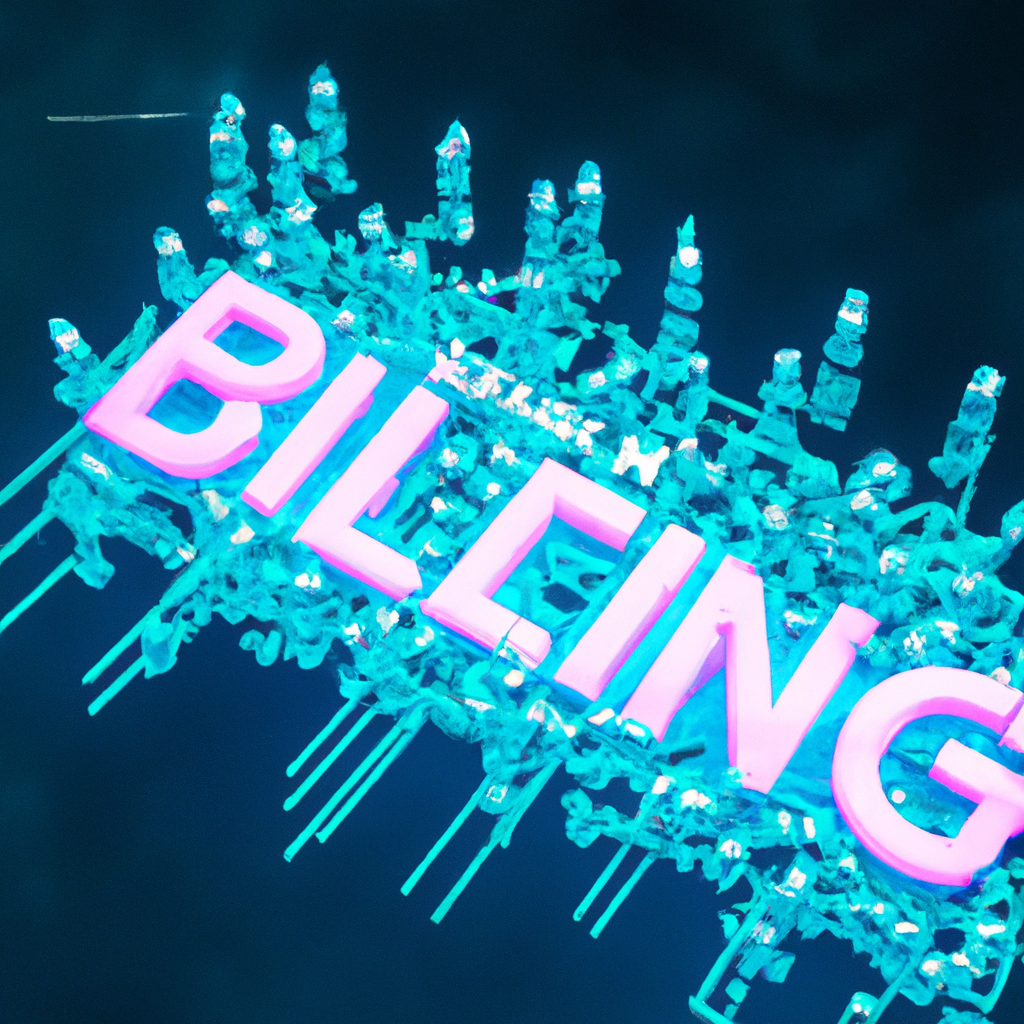What is Backlink Diversity
Key Takeaway:
- Link diversity is a crucial factor in achieving higher SEO rankings. Search engines consider a variety of factors when ranking websites, and having a diverse range of links helps to demonstrate the credibility and authority of your website.
- Link diversity provides several benefits, including improved organic search rankings, better domain authority, and increased website traffic. It also helps to protect against penalties resulting from over-optimization or low-quality links.
- Building a natural link profile through diversity involves using a range of anchor text and building links from multiple sources. Types of sources to consider include guest blogs, social media, forums, and directories. It’s important to avoid over-optimization by varying your anchor text and focusing on relevance over quantity.
The Importance of Link Diversity in SEO
Did you know that having a diverse range of backlinks can greatly improve your website’s search engine rankings? In this section, we’ll discuss the importance of link diversity in SEO and explore the various factors that can affect your website’s rankings. And if you’re wondering what the benefits of having link diversity are, we’ll cover that too. So let’s dive in!
Factors Affecting SEO Rankings
Link diversity is an important factor for SEO rankings. It helps to get links from different sources and using different anchor texts. This looks natural to search engines and boosts website’s authority. Also, the location of the linking domains matters to search engines.
Too much optimization can be bad for SEO, so it is important to have diverse links. For better SEO rankings in 2021, website owners and marketers must create quality backlinks from various sources, relevant to search engine criteria.
The Benefits of Having Link Diversity
Link diversity is essential for SEO rankings. It boosts naturalness and reduces the chance of search engine penalties. Benefits include providing authority signals from high-quality sources. This increases domain authority and page rank.
It also expands potential audience, thus increasing brand exposure. This increases the likelihood of engaging potential customers. Here are some benefits:
- Enhances naturalness and reduces risk of penalties.
- Provides authority signals from high-quality sources, raising domain authority and page rank.
- Expands potential audience, leading to increased brand exposure and chances of engaging potential customers.
Link diversity gives authority signals from high-quality sources. These signals up domain authority and page rank, making the website more visible in search results. Additionally, diversified links create chances to attract traffic from different sources. This increases brand awareness and exposes it to new customers. Studies show this has positive outcomes. For example, a company used varied anchor texts and generated more traffic from Google searches.
To sum up, link diversity is like a buffet – the more variety you have, the better your SEO results.
What is Link Diversity?
Link diversity has a huge part to play in SEO and website ranking. But, what is link diversity exactly? In a nutshell, it’s the variation of backlinks from various sources that point back to a website. It’s vitally important for a website to have a vast and diverse backlink portfolio in order to rank well on search engine results pages. Search engines look at a website’s authority and relevancy based on the amount and quality of backlinks it gets.
To achieve diversity in backlinks, a website must have them from different websites, domains, and IP addresses. Each link should have different anchor texts, with various keywords used along with natural phrases. Too much optimization and anything that looks like spam must be avoided at all costs.
It’s worth noting that link diversity is not the same as link building. Site owners should concentrate on building relationships with different sources and creating top-notch content that attracts backlinks naturally. Interesting content also helps website visitors stay longer, which increases the website’s authority and relevancy.
To sum up, link diversity is key for SEO and website ranking. Having a variety of backlinks gives the website more authority and relevancy in the eyes of search engines, resulting in higher visibility on search engine results pages. Site owners must strive to get high-quality backlinks from many sources and steer clear of spammy practices.
Building a Natural Link Profile through Diversity
When it comes to building a strong link profile, diversity is key. In this section, we’ll explore how to achieve link diversity through varying anchor text and building links from different sources. By implementing these tactics, you can improve the credibility of your website and enhance your search engine rankings. According to the reference data, a healthy backlink profile is vital for website success, and achieving link diversity is an essential part of this process.
Achieving Link Diversity through Varying Anchor Text
Achieving a high SEO ranking requires link diversity. To make this happen, vary anchor text. Doing so ensures a natural link profile while including relevant keywords and links.
Over-optimizing can lead to search engine penalties. To avoid this, use different variations of anchor text with relevant keywords.
Having multiple sources for link building is essential. Blog comments and guest posts work well here.
To achieve link diversity, build relationships with bloggers and websites in a certain niche. Honesty helps here.
For diverse backlinks, use varied anchor text. Analyze posts and determine the most natural mix of anchor text for keyword targeting.
Link building is like a buffet. Varying sources creates a diverse & natural profile. Vary anchor text to get a high SEO ranking.
Building Links from Different Sources
Achieving a successful SEO strategy requires links from different sources. This helps a website gain credibility and authority on search engines, and avoid penalties which could damage ranking results. Quality links from relevant sources is essential to increase relevance and trustworthiness on search engines. Multiple links built over time show growth and will help with trustworthiness. Follow and no-follow links should be diversified to help link saturation. Obtaining links solely for SEO could be ineffective. Networking and sharing content can help build relationships and backlinks. Building links from different sources is key for a natural link profile and success in SEO. It helps a website gain authority, remain relevant, and increase positive ranking results.
Types of Sources to Build Links From
For great SEO, building links from lots of sources is necessary. Quality and quantity are both important. Diverse backlinks can improve a website’s ranking.
To help, there are 6 key points:
- Guest blogging on authoritative sites.
- High-quality articles for social media sharing.
- Listing websites in local directories.
- Getting listed on respected resource pages.
- Developing relationships with niche influencers.
- Using broken link building techniques.
Put these approaches together and a diversified link profile may be created for better results.
Also, internal links are significant. They are as important as external links. Internal links make content easier to find for search engines and help to transfer authority from the homepage to other pages. Combining internal and external linking will create a healthier link profile, leading to optimal SEO optimization.
Avoiding Over-Optimization through Varied Anchor Text
SEO requires avoiding over-optimization. This means backlink diversity is essential. It stops spamming and over-optimizing websites. To achieve higher search engine rankings, different types of anchor text must be used. This spreads the website’s relevance across various keyword searches. This variation improves website ranking and stops it from being penalized.
Using varied anchor text is vital to display website relevancy across many search queries. Use partial match or related keywords for semantic NLP. This helps websites rank higher without over-optimizing. Overuse of exact match anchor text can result in penalty or lower ranking.
Varying anchor text increases website visibility and search engine ranking. Search engines recognize and appreciate this. It also increases the chance of getting high-quality backlinks, and stops penalties from over-optimization. Maintaining diverse anchor text is hard but necessary to succeed in SEO.
Different Types of Links and Their Impact on SEO
Links are essential for SEO. The type of links affects a website’s ranking. A variety of links pointing to a website is known as backlink diversity, which has a major effect on SEO. It is best to understand the different types of links and their effect on SEO via a table. This table features Internal Links, External Links, Do-follow, No-follow, and Backlinks. Internal and external links decide the site’s web structure. Do-follow and no-follow links influence search engine crawlers. Backlinks are particularly useful in SEO as they show the authority of the web page linked to it.
Backlink diversity is key to getting a high page rank. It is essential to get links from authentic and relevant sources. Linking to low-quality websites or irrelevant pages can harm a domain’s reputation and hurt SEO. Relevant and authentic sources should be used when building backlinks.
To increase backlink diversity, various link building strategies can be used. These include:
- Broken link building means finding broken links and suggesting a website to replace them.
- Guest blogging enables websites to exchange posts and attract new visitors.
- Competitor analysis means studying the backlink profile of competitors to spot potential backlinks.
Making use of these strategies helps to get links from diverse sources, leading to higher rankings on search engines.
The Role of Linking Domains and Geographic Location in Link Diversity and SEO
Link diversity is key for SEO. Both linking domains and geographic location influence it. A website’s ranking gets better with more diverse links. This article looks at the role of domains and locations in link diversity and SEO.
To show the effect of linking domains and locations, use a table. It can have columns for domain authority, country, and number of links. Referring to this data can give great insights into link diversity’s importance to SEO and how it changes based on the domain’s authority and location. For example, sites with high domain authority and links from many countries often have better link diversity and higher search engine rankings.
Anchor text and link relevance matter too for link diversity and SEO. The right anchor text and linking to relevant webpages can boost a website’s authority and reach. Use the right keywords and h-tags for improved link diversity and SEO.
Don’t miss out on the advantages of link diversity and its influence on SEO. Make link diversity a priority and optimize it with the right domains, locations, anchor text, and relevance. This leads to better search engine rankings and more traffic. Start optimizing link diversity now to stay ahead in the digital world.
Is Link Diversity Relevant in 2018?
Backlink diversity is essential for a website’s credibility and popularity, not only in 2018 but in the future too. Quality and quantity are important, but having many backlinks from various sources is more influential than the total amount of links. Search engines prefer websites with different domains and sources instead of a huge number from one source.
To create diverse backlinks, anchor texts and links to different webpages should be varied. Forming a network of links between various pages and domains can also increase link diversity significantly. Search engines reward websites with diverse links as this reduces the chances of link manipulation. Webmasters should focus on constructing diverse links related to the website’s niche.
Attaining backlinks from dependable sources such as industry leaders, news outlets, and educational institutions can help websites gain authority and trustworthiness, eventually improving their SERP ranking. Research by Moz reveals that websites on the first page of SERPs have more link diversity than those on the second or lower pages. Therefore, webmasters should concentrate on boosting the number of unique domains linking to their website.
Ahrefs claims that successful websites normally have an average of 37% of their referring domains coming from unique IP addresses, showing high link diversity. Hence, website owners must focus on establishing an assorted range of links from reliable sources to raise their website’s visibility, traffic, and search engine ranking. To conclude, link diversity is and will remain significant in 2018 and the future to succeed in SEO.
The Misunderstanding of the Principles of Link Diversity
Link diversity is key for SEO. But, there’s confusion around its principles. Many think it’s only about links from multiple domains. Really, it’s about a balanced link profile. This should include dofollow and nofollow links, different anchor texts, and links from high and low domain authority websites. Not following this could lead to an unbalanced link profile which impacts rankings badly.
To get a diverse link profile, you need a plan. Plus, avoid links that seem manipulative to search engines. Get links from different sources using natural and ethical tactics instead.
To sum up, a diverse link profile is essential. So, don’t misunderstand its principles. Follow the steps above to get a balanced link profile and higher organic rankings.
Relevance vs. Diversity in Linking Criteria
When considering linking criteria, relevance and diversity are extremely important. Relevance involves making backlinks that match the site’s content. Diversity refers to having multiple sources linking to the website.
Having a range of authoritative backlinks can increase the website’s trustworthiness, bringing its ranking up on search engines. However, irrelevant backlinks can lead to the website being penalized, which could harm its ranking.
A unique component is backlink diversity, where links come from sources like social media, blogs, and directories. This diversity helps search engines verify the website’s legitimacy.
Website owners can increase backlink diversity by combining different types of links, such as text and images. Additionally, high-quality content that others would want to link to boosts diversity.
To improve and keep the website’s authority, it’s essential to find the balance between relevance and diversity. By using both, website owners can be sure their website’s credibility will grow and remain strong.
Google’s Perspective on Linking: The Six Degrees of Kevin Bacon
Google values diversity in backlinks when judging a website’s authority. It is similar to the Six Degrees of Kevin Bacon, where a website’s links can be followed back to other sites – more unique linking domains means a higher authority. Google suggests website owners widen their backlink portfolio to boost their SERP ranking and reputation.
Google sees backlinks like the Six Degrees of Kevin Bacon. More linking domains gives more trustworthiness. Website owners should aim to get many linking domains from a range of sources, such as forums, social media and related websites.
But it is also important that the domains are related to the website’s niche. Relevant backlinks can have a stronger effect on search engine rankings. Ultimately, with a diverse backlink selection, website owners can enhance their reach, credibility and ranking.
To summarise, backlink diversity is essential for Google. They advise website owners to get unique linking domains from relevant sources to increase their website’s authority and presence. So, it is time to look at your backlink strategy and how it can improve your SERP ranking!
Benefits of Obtaining Inbound Links from Different Pages and Domains .
Inbound links from different pages and domains bring many advantages to a website. It’s important to get links from various sources to add value and build trust. Diverse backlinks lower the threat of Google penalties, as they show the site is not relying on one or few sources for link building. These links increase referral traffic, giving access to a wider audience. Also, inbound links increase the website’s authority and better its search engine rankings, resulting in more organic traffic. Backlinks from different domains give social proof, allowing search engines to recognize the website’s trustworthiness and relevancy. A diversified backlink portfolio boosts the chances of being featured in news articles, blogs, and other online publications. This helps with visibility and brand awareness.
Moreover, links from different pages and domains also let websites create connections with other websites and brands. This creates opportunities for networking and collaborations. In SEO, backlink diversity is an essential factor. The amount, quality, and diversity of inbound links decide how high the website ranks on search engines. Websites that focus on developing a diverse backlink profile usually experience growth in organic traffic. This leads to more recognition and higher revenue.
Previously, people used inbound links to manipulate search engine rankings. However, after the Google Penguin algorithm update, backlink diversity has become a norm in SEO. Websites that use black hat tactics such as purchasing links or linking exchange schemes may get penalized by search engines. It’s important to focus on natural link building strategies and prioritize diversity in the backlink profile. This will improve the website’s visibility and trustworthiness, leading to long-term success.
Five Facts About Backlink Diversity:
- ✅ Backlink diversity is the concept of having a variety of backlinks from different sources, such as directories, industry-specific websites, blogs, and social media platforms. (Source: LinkedIn)
- ✅ Link diversity is considered a critical factor in SEO and is important for improving website rankings, creating a natural link profile, and increasing traffic to a website. (Source: MarketBrew)
- ✅ Links from diverse sources are seen as more credible and deserving of a higher ranking in search results, signaling authority, trustworthiness, and relevance to search engines. (Source: MarketBrew)
- ✅ It is important to vary anchor text and use different types of links, such as dofollow and nofollow, to avoid over-optimization and improve link diversity. (Source: MarketBrew)
- ✅ While there is some debate over the importance of backlink diversity, experts agree that having a natural and diverse link profile is beneficial for SEO. (Source: Search Engine Journal)
FAQs about What Is Backlink Diversity
What is backlink diversity and why is it important for SEO?
Backlink diversity refers to having a variety of backlinks from different sources, including social media platforms, directories, industry-specific websites, blogs, and other websites. It is an important factor in SEO because it improves rankings, creates a natural link profile, and increases traffic to a website.
How does statistical link analysis play a role in understanding backlink diversity?
Statistical link analysis involves analyzing the links pointing to a website using statistical methods to identify patterns and trends. Using this analysis, webmasters can identify a diverse range of links pointing to their website from different sources, allowing them to improve their link diversity and, ultimately, their SEO performance.
What are some examples of links variety sources for improving backlink diversity?
Some examples of variety sources for improving backlink diversity include social media platforms, directories, industry-specific websites, blogs, and other websites. Webmasters can also focus on website linking domains and geographic location to improve their link diversity.
How does modern link analysis help identify poor link building and link manipulation criteria?
Modern link analysis involves using advanced algorithms and techniques to evaluate the quality of links and identify patterns that suggest poor link building or link manipulation. This analysis is critical for webmasters who want to maintain a diverse range of links and avoid penalties from search engines for poor link building practices.
How does the concept of link diversity apply to modern search engine optimization (SEO)?
In modern SEO, link diversity is a critical factor in improving website visibility and ranking in search engine results. Search engines evaluate the relevance and authority of a website based on its link profile, and a diverse range of links from different sources signals to search engines that the website is trustworthy and authoritative.
How can a diverse range of links from different sources affect a website with a large number of links?
A diverse range of links from different sources can help improve the SEO performance of a website with a large number of links. This is because search engines evaluate the quality and relevance of links, not just the quantity. A diverse range of links from different sources signals to search engines that the website is trustworthy and authoritative, which can improve its visibility and ranking in search results.







